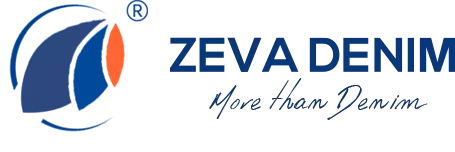Introduction
- Brief overview of the importance of quality inspection in the denim fabric industry
The denim fabric industry relies heavily on quality inspection to ensure that the finished products meet the high standards expected by consumers. Quality inspection is crucial in maintaining the reputation of denim manufacturers and ensuring customer satisfaction.
- Introduction to the 4-Point American System for quality inspection
One widely used method for quality inspection in the denim fabric industry is the 4-Point American System. This system provides a structured approach to evaluating the quality of denim fabric, allowing manufacturers to identify and address any defects before the fabric is used in production.
Understanding the 4-Point American System
- Explanation of the 4-Point American System
The 4-Point American System evaluates denim fabric based on four key criteria: appearance, hand feel, construction, and color. For example, in terms of appearance, the fabric is checked for any irregularities such as streaks, holes, or variations in the dye. The hand feel refers to the texture and softness of the fabric, ensuring it meets the desired tactile experience. Construction involves examining the strength and durability of the fabric, including the integrity of seams and weave consistency. Lastly, color inspection ensures that the fabric maintains a consistent and uniform color throughout.

- Comparison with other quality inspection systems
When compared to other quality inspection systems, such as the 10-Point system or the Japanese inspection system, the 4-Point American System offers a more streamlined and focused approach. By concentrating on four specific criteria, it provides a clear and efficient method for evaluating denim fabric, making it easier to identify and address any issues.
- Benefits of using the 4-Point American System for denim fabric
An example of the benefits of using the 4-Point American System is its ability to provide a standardized and objective assessment of fabric quality. For instance, by assigning point values to each criterion, it offers a quantifiable measure of quality, allowing for consistent evaluation across different batches of fabric. This helps manufacturers maintain a high level of quality control and ensures that only the best denim fabric is used in production.
Implementing the 4-Point American System in Denim Fabric Quality Inspection
- Step-by-step guide to implementing the 4-Point American System
Implementing the 4-Point American System in denim fabric quality inspection involves a structured approach. This includes training inspectors on the specific criteria for evaluating denim fabric, establishing clear guidelines for assigning point values, and creating a standardized reporting format for documenting inspection results.
- Practical examples of how the system can be applied in denim fabric quality inspection
For example, when applying the 4-Point American System, inspectors would systematically assess the appearance, hand feel, construction, and color of denim fabric samples. They would then assign point values based on the condition of each criterion, providing a comprehensive evaluation of the fabric’s quality.
- Case studies of successful implementation of the system in the industry
Case studies can highlight how denim manufacturers have successfully integrated the 4-Point American System into their quality inspection processes. These examples can demonstrate the system’s effectiveness in improving the overall quality of denim fabric and reducing defects in the production line.
Challenges and Solutions in Using the 4-Point American System
- Common challenges faced when implementing the system
Challenges in using the 4-Point American System may include resistance to change from existing inspection methods, difficulty in training staff to use the system effectively, and ensuring consistent application of the criteria across different inspectors.
- Strategies for overcoming these challenges
Strategies for overcoming these challenges may involve providing comprehensive training and resources to inspectors, fostering a culture of quality consciousness within the organization, and gradually transitioning from previous inspection methods to the 4-Point American System.
- Best practices for maximizing the effectiveness of the system
Best practices for maximizing the effectiveness of the 4-Point American System may include regular calibration of inspectors, continuous improvement based on feedback and data analysis, and fostering collaboration between quality control teams and production units to address any issues identified during inspection.
Conclusion
- Recap of the benefits of using the 4-Point American System in denim fabric quality inspection
The 4-Point American System offers numerous benefits for denim fabric quality inspection, including a standardized and objective approach to evaluating fabric quality, improved consistency in inspection results, and the ability to identify and address defects effectively. By focusing on key criteria such as appearance, hand feel, construction, and color, the system provides a comprehensive assessment that helps maintain high standards in denim production.
- Final thoughts on the future of quality inspection in the denim fabric industry
As the denim fabric industry continues to evolve, the role of quality inspection becomes increasingly vital. The 4-Point American System, with its structured approach and focus on key quality criteria, is well-positioned to play a crucial role in ensuring the continued production of high-quality denim fabric. With advancements in technology and data analysis, the future of quality inspection in the denim fabric industry holds the potential for even greater precision, efficiency, and reliability, ultimately contributing to the overall success and reputation of denim manufacturers worldwide.





